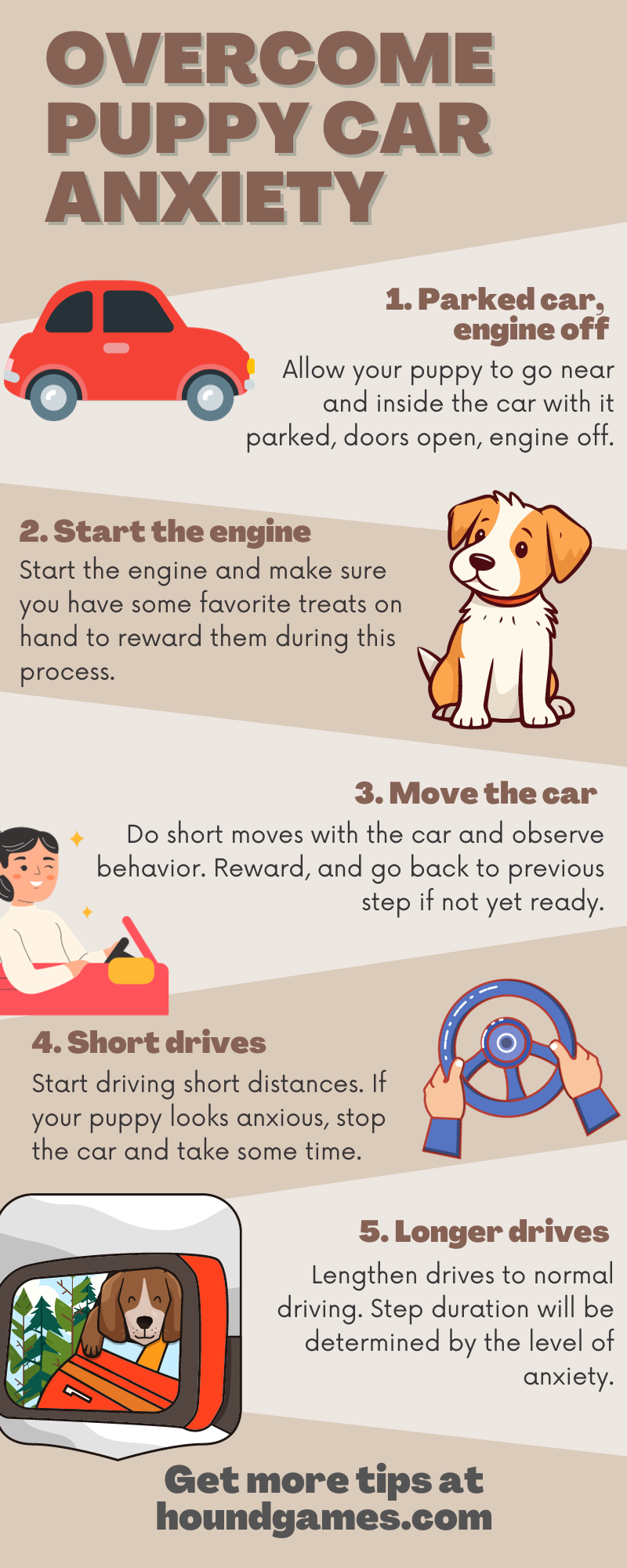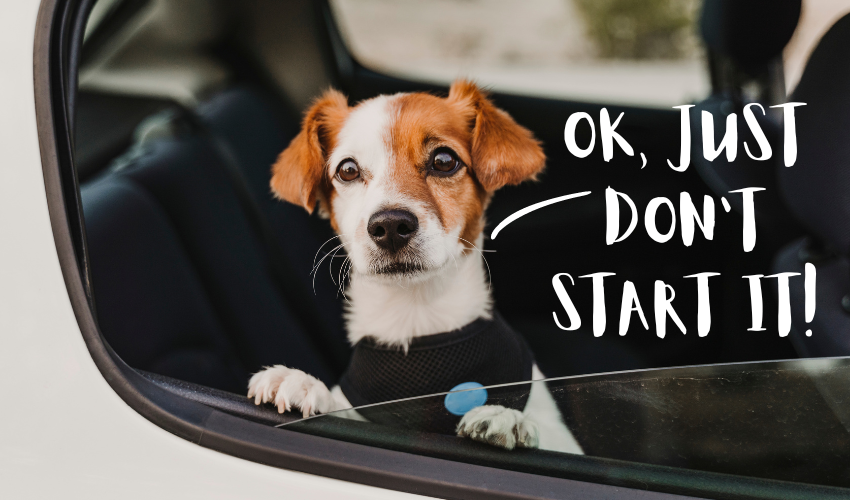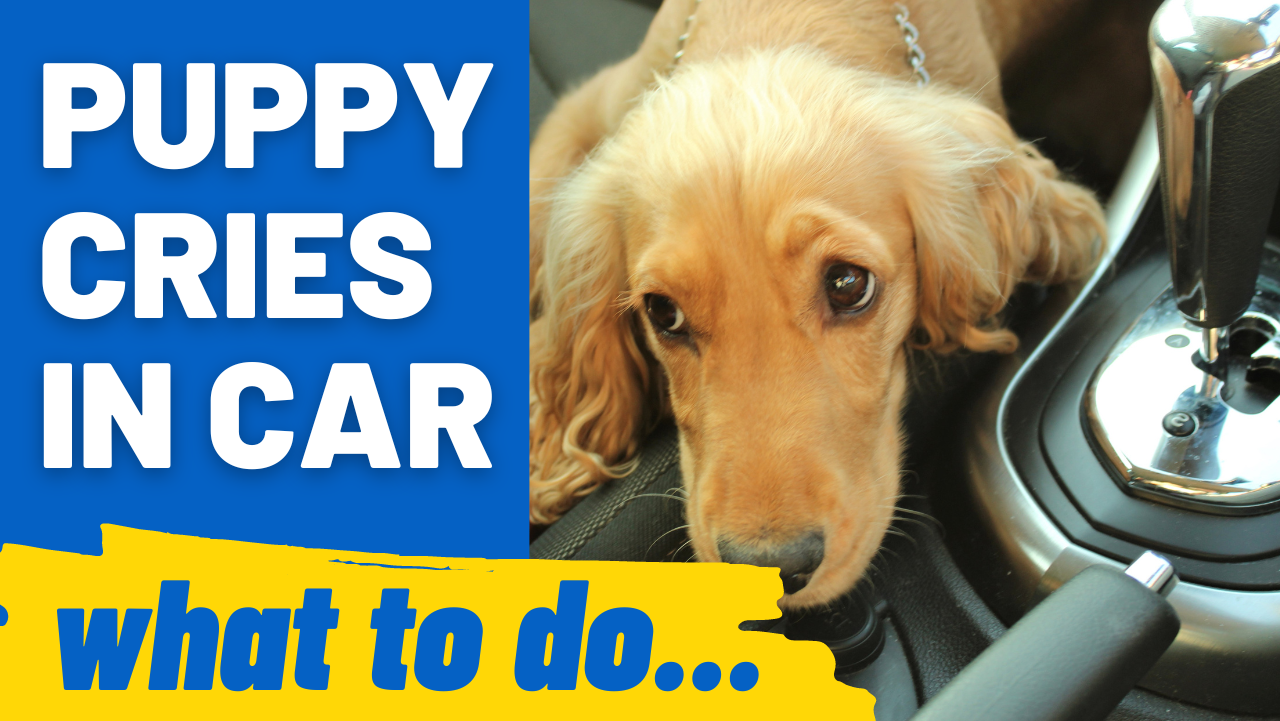Whether you are taking your puppy on a necessary trip to the veterinarian or heading out on a fun adventure, a puppy that cries in the car certainly makes the trip more frustrating (and headache-inducing!) than necessary.
The first thing you’ll need to do if your puppy is crying in the car is to determine why your puppy is doing it. Then, we can address the underlying issue causing your puppy to whine and cry while on the road.
Why is my puppy crying in the car?
Puppies most often will cry in the car because of fear or anxiety, excitement, or motion sickness. Each of these will need to be addressed differently, so narrowing down the reason is an important first step.
If your puppy hasn’t spent much time in the car, they may be nervous and unsure, and crying due to anxiety. If this isn’t addressed, they may still cry from anxiety even after many car rides.
A puppy that is crying in the car because they are stressed or worried will likely try to escape, or curl up and be very still (even while crying). They may also yawn, lick their lips, and have whale eyes, in addition to other signs of anxiety in dogs.
The anxious puppy will often recover once out of the car and may resist being put in the car in the first place.
Puppies that are crying because they are excited will instead often love to get to the car and be alert and happy, yelping just to tell the whole world how excited they are to be going somewhere fun.
For your puppy to cry because they associate the car with being excited, they are usually an older puppy that has experienced many car rides that have taken them on fun adventures. If your puppy is crying in the car and hasn’t had many fun car rides before, it’s unlikely they are crying from excitement.
Finally, some puppies will cry and become upset in the car because they associate the car with motion sickness and nausea. These puppies will often drool excessively and may vomit.
To make sure your pup is always safe and prepared for a car ride, be sure to read our post How to Drive with a Puppy.
How do you stop a puppy from crying in the car?

Once you’ve determined why your puppy is crying in the car, you can begin to address the root cause. We never want to simply punish the puppy for crying, because that is only addressing a behavior “symptom” and not the reason your puppy is scared or excited in the first place.
For puppies that are excited about being in the car, it’s helpful to practice going in the car when it’s not moving and practice calming exercises, such as Dr. Karen Overal’s Relaxation Protocol.
Once your puppy can settle in a stationary car, try continuing your training while someone else drives the car so you can focus on helping your puppy stay calm.
If your puppy is crying because the motion of the car makes them feel sick and nauseated, it’s best to talk to a veterinarian. While some puppies may eventually outgrow this behavior, others will become quite anxious about the car long-term if they associate too many car rides with the feeling of nausea.
Your puppy’s veterinarian may be able to prescribe an anti-nausea medication or a medication to help with motion sickness to ease your puppy’s distress.
Stopping a puppy from crying in the car because they’re anxious can be more involved. Keep reading below to see how to calm the anxious puppy.
You might like to also read our post, 7 Proven Products for Dogs with Anxiety
How can I calm my puppy’s anxiety in the car?
It’s best to set your puppy up for car rides in a way that keeps them safe, while also keeping them comfortable. Crating your dog while in the car, or keeping them secure with a dog seatbelt, are two great ways to ensure they are safer in case of an accident.
If your puppy is not comfortable in their crate, crating them in the car may be one reason for their anxiety. While crates are a great tool for keeping puppies safe and contained during travel, it’s important you spend time making the crate a fun place to be before using the crate in the car.
Car crates also are often more comfortable when on the smaller side, to prevent the puppy from being tossed about within the confines of the kennel. A non-slip surface on the bottom of the crate can help your puppy feel more secure, too.
Car harnesses that are designed to work as seatbelts for dogs are often a great compromise to keep your dog from being tossed through the window in a crash, while also avoiding the use of a crate. My dogs regularly ride in car harnesses buckled into the back seat to save on space on long trips, too. Not much else would fit in my vehicle besides their crates, otherwise!
If you are driving alone with your puppy, it may be helpful to enlist a friend to worry about driving the car while you sit in the back and help comfort your puppy. Feeding them treats, letting them snuggle for support, and telling them what a great job they’re doing can reduce their anxiety.
For the most anxious of puppies, it’s best to start practicing being calm and restful in the car when the car isn’t turned on or moving. Once they begin to settle in a stationary car, you can repeat the process with the car on, and then with the car moving.
You can do this on days when the weather cooperates by sitting in your car, reading, or working on a project on your laptop, while your puppy sits in the car with a stuffed Kong or another delicious treat. Keeping the doors or windows open may also help your puppy feel less trapped, too.
Watch for your puppy to become comfortable. Restful puppies should be loose, floppy, and relaxed in their body language. Tense and stiff body language indicates your puppy is worried or stressed.

Why does my puppy hate being in the car?
Puppies are often frightened of things they haven’t experienced, especially if they didn’t experience it as a normal part of life when they were very young. While car rides are often a part of responsibly raising a litter of well-adjusted dogs, not every breeder or puppy-raiser considers this aspect.
Car rides for many puppies may be the first time they’re alone and away from their littermates, and there are often many new sights, sounds, and experiences that go along with trips in the car.
Other puppies may associate the car with going places they don’t like, such as the vet’s office, if they’re particularly anxious about new experiences in general.
Genetics plays a role in anxiety, too. Even with the best socialization experiences, puppies may still become fearful of things because their genetic make-up trends heavily towards the side of anxiety, rather than calm and confident.
How do I train my dog not to hate the car?
Slow, repeated, and positive experiences in the car are often required to overcome a dog’s fears or anxieties.
For some dogs, they may only be able to learn to tolerate car rides, and will never truly love them and find them exciting.
It’s critical that you avoid forcing your dog into the car and on trips in the car. Your puppy will learn to tolerate car rides much quicker if they are able to choose whether or not to get in the car on their own.
This often means you might progress at what feels like a slow pace, however, forcing your dog to face their fears risks giving them even more reasons to hate the car.
If your puppy has a lot of anxiety in the car, especially if they shake and cry, you likely will need professional help.
Seeking out a trainer through IAABC, APDT, or CCPDT is a great place to start. You may also consider checking in with your puppy’s veterinarian, to see if your puppy’s behavior warrants the use of anxiety medication in the meantime when travel is necessary.
You might like to also read our post Will My Dog Jump Out of the Car Window? (Yes or No)




